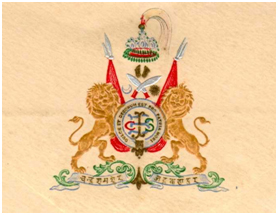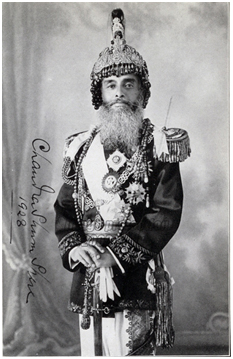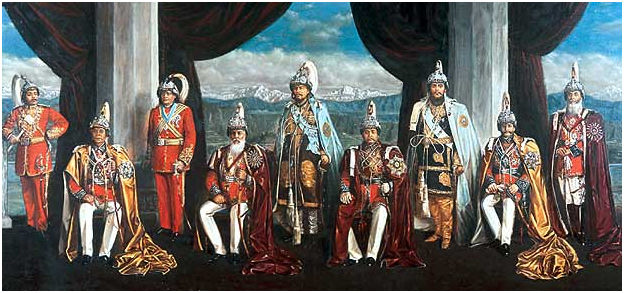- Home |
- Why With Us |
- About Us |
- Booking |
- Contact Us |
- Site Map
- Home
-
Nepal
-
Trekking
- Arun Valley with Gokyo Lakes
- Everest Base Camp Trek
- Everest- A Living Culture Exploration
- Everest Explore
- Everest Base Camp (via Thame) Trek
- Everest Base Camp with Kala Patthar
- Everest Comfort Trek
- Everest High Passes with Ama Dablam Base Camp
- Everest Mani Rimdu Festival Trek
- Everest Nagpa La Trek
- Everest with three high passes
- Gokyo Ri, Chola Pass & Chukung Ri with Kala Patthar
- Gokyo with Everest Base Camp
- Jomsom - Muktinath
- Jomsom - Muktinath
- Khayar Lake Trek
- Manaslu and Tsum Valley with Larkya La
- Upper Mustang Trek
- Manaslu High Circuit
- Manaslu, Tilicho Pass & Upper Mustang
- Annapurna Base Camp Trek
- The Annapurna Circuit Trek
- Annapurna Panorama
- Nar and Phu Valley Trekking
- Nepal Rhododendron Trek
- Royal Trek
- Saribung Trek and Expedition
- Annapurna Sanctuary Trek
- The Annapurna Sunrise Trek
- Expedition
-
Rafting
-
Peak Climbing
-
Tours
- Kathmandu-Chitwan-Jungle Tour with visit to Pokhara
- Dawn to Dusk Tour
- Historical, Natural & Cultural Tour with Camping
- Kathmandu Valley Temple Tour
- Temple - Panorama - Jungle Tour
- Taste of Nepal
- Central Nepal Tour
- Explore Nepal Tour & Trek
- Nepal Cross-country Tour
- Best of Nepal Tour & Treks
- Kathmandu valley rim Tour & Treks
- Nepal Culture Tour
- Introduction to Nepal Tour & Treks
- Nepal at a glance Tour & Treks
- Wonders of Nepal Tour & Treks
- Glimpses of Nepal Tour & Treks
- Through the Silhouette Tour & Treks
- Tent and Temple Tour
- Kathmandu-Chitwan-Pokhara Tour
- Historical, Cultural City and Jungle Tour
- Nepal Wildlife Tour
- Nepal Panorama Historical Tour
- Nepal Adventure Tour
- Nepal Pilgrimage Tour
- Ghalegaun-Ghanapokhara Homestay Tour
- Jungle Safari
- Adventure Sports
-
Trekking
- Tibet
-
Bhutan
-
India
- Yoga Tour
- About Us
-
The Great Himalayan Trail
-
Short Tours/Treks

The Ranas
 After the death of Jang Bahadur, his eldest surviving brother, Ranoddip Singh, became prime minister (1877-85). Because he was childless, his term in office was full of plots by Jang Bahadur's sons and nephews over succession. These plots were complicated by the death of King Surendra Bikram Shah in 1881 and the royal accession of Prithvi Bir Bikram Shah (reigned 1881-1911) at the age of six. Finally, the doddering Ranoddip Singh was assassinated, and Bir Shamsher, son of Jang Bahadur's youngest and closest brother, became prime minister (1885-1901). Bir Shamsher immediately launched a purge of his opponents. While in power, he brought piped water to the Kathmandu Valley, built a suspension bridge at Kulekhani, and set up a palace school where English was taught. His successor for three months was the progressive Dev Shamsher, who emancipated all female slaves, established a network of Nepali language schools called Bhasa Pathsalas, and started the first Nepali-language newspaper, Gorkhapatra (Gorkha Newsletter). A coalition of his brothers, upset with his radical tendencies, forced Dev Shamsher's resignation and retirement to India.
After the death of Jang Bahadur, his eldest surviving brother, Ranoddip Singh, became prime minister (1877-85). Because he was childless, his term in office was full of plots by Jang Bahadur's sons and nephews over succession. These plots were complicated by the death of King Surendra Bikram Shah in 1881 and the royal accession of Prithvi Bir Bikram Shah (reigned 1881-1911) at the age of six. Finally, the doddering Ranoddip Singh was assassinated, and Bir Shamsher, son of Jang Bahadur's youngest and closest brother, became prime minister (1885-1901). Bir Shamsher immediately launched a purge of his opponents. While in power, he brought piped water to the Kathmandu Valley, built a suspension bridge at Kulekhani, and set up a palace school where English was taught. His successor for three months was the progressive Dev Shamsher, who emancipated all female slaves, established a network of Nepali language schools called Bhasa Pathsalas, and started the first Nepali-language newspaper, Gorkhapatra (Gorkha Newsletter). A coalition of his brothers, upset with his radical tendencies, forced Dev Shamsher's resignation and retirement to India.
 Chandra Shamsher took over (1901-29) and attempted to resolve the unending family feuds over succession rights by amending the Rolls of Succession that had originally been set up by Jang Bahadur. The modified Rolls of Succession contained three schedules: "A" class Ranas were the direct, legitimate offspring of Ranas, who could dine with any high-caste Chhetri family; "B" class Ranas usually were born of second wives and could take part in all forms of social interaction with high-caste Chhetris except the sharing of boiled rice; and "C" class Ranas were the offspring of wives and concubines of lower status with whom intertwining was forbidden. The "A" class Ranas could fill the highest positions in the army or civil administration, but "B" or "C" class Ranas at that time could only reach the level of colonels in the army and could never become prime ministers. At the time, this plan seemed adequate for finalizing everyone's position in the state and stopping conspiracy. In the long run, however, the rigid Rolls of Succession alienated large numbers of aristocrats who saw little room for advancement in the Rana system, lost interest in preserving it, and even began opposing it. The alienation increased when Juddha Shamsher (in power 1932-45) removed all "C" class Ranas, including some of his own sons, from the swollen Rolls of Succession and appointed many of them to administrative positions in districts far from the capital. In this way, the Rana dictatorship slowly created opposition within its own ranks.
Chandra Shamsher took over (1901-29) and attempted to resolve the unending family feuds over succession rights by amending the Rolls of Succession that had originally been set up by Jang Bahadur. The modified Rolls of Succession contained three schedules: "A" class Ranas were the direct, legitimate offspring of Ranas, who could dine with any high-caste Chhetri family; "B" class Ranas usually were born of second wives and could take part in all forms of social interaction with high-caste Chhetris except the sharing of boiled rice; and "C" class Ranas were the offspring of wives and concubines of lower status with whom intertwining was forbidden. The "A" class Ranas could fill the highest positions in the army or civil administration, but "B" or "C" class Ranas at that time could only reach the level of colonels in the army and could never become prime ministers. At the time, this plan seemed adequate for finalizing everyone's position in the state and stopping conspiracy. In the long run, however, the rigid Rolls of Succession alienated large numbers of aristocrats who saw little room for advancement in the Rana system, lost interest in preserving it, and even began opposing it. The alienation increased when Juddha Shamsher (in power 1932-45) removed all "C" class Ranas, including some of his own sons, from the swollen Rolls of Succession and appointed many of them to administrative positions in districts far from the capital. In this way, the Rana dictatorship slowly created opposition within its own ranks.

Prithvi Narayan Shah and his successors had used the older administrative systems of Gorkha and the kingdoms of the Kathmandu Valley to run the central government of a united Nepal that was in theory accountable to the king. Jang Bahadur had inherited control over these systems and proceeded to undercut their power by packing them with his own officials or by establishing parallel offices that duplicated functions and, in effect, took over the work of older offices. There had always been an Assembly of Lords filled by leading aristocrats, military leaders, administrators, or head priests. In the past, this assembly had met periodically to advise the king and make important decisions. Under Jang Bahadur and his successors, it was full of Ranas and their henchmen. Aside from the codification of the Muluki Ain, the assembly functioned as a rubber stamp for Rana decisions. Accounting procedures and records had been kept by an Office of Accounts, a State Treasury, and a Land Revenue Office. Under Jang Bahadur, separate offices staffed by his appointees kept records of military grants, religious endowments, land revenue, treasury correspondence, and military correspondence--in other words, the most important components of the older royal administration. Special offices for the investigation of corruption and for police matters (staffed by army personnel) formed the core of a police state. There were few avenues open for government personnel to work outside of a network dominated by Rana interests; those who did could be detected and were either punished or coopted into the Rana system. The government of late nineteenth-century Nepal thus stripped the monarchy of any real power and maintained a late medieval administrative framework.
Because their power was ultimately illegitimate, resting on the abdication of responsibilities by the king and his virtual incarceration, the Ranas became expert at preventing any kind of challenge. In the process, they succeeded in isolating Nepal from many of the changes happening throughout the world and even in nearby India.
The Ranas were not totally inactive during the period of dictatorship, however. On the legal front, suttee, or the suicide of a wife by throwing herself onto her husband's funeral pyre, was abolished in 1920, and slavery was abolished in 1929. Tri-Chandra College was established in 1918, and by the 1940s there were several high schools in the country and two Nepali literary magazines. The Ranas also attended to economic development by founding the Pharping Hydroelectric Company in 1911 and establishing the Nepal Industrial Board, a jute mill, a match factory, two cotton mills, the Nepal Plywood and Bobbin Company, and several rice mills during the 1930s. As for public health, the first tuberculosis clinic was set up in 1934. In view of the population of approximately 6 million in the 1930s, these accomplishments seem pitiful. Almost all Nepalese remained illiterate and uninformed about any part of the world outside their villages or, at best, their valleys. Public health and economic infrastructure had not advanced past medieval levels in most areas, and doing anything about it was proving impossible. Under Bhim Shamsher (reigned 1929-32), fifty people were arrested and fined for setting up a public library.
Because the Ranas relied on the goodwill of the army and the British government to support their dictatorship, the army served as a legitimate--and perhaps the most viable--means for Nepalese citizens to achieve upward mobility or to see the world. During World War I (1914-18), the government of Nepal loaned more than 16,000 troops to the British, and 26,000 Nepalese citizens who were part of British Indian regiments fought in France and the Middle East. In gratitude the British government in 1919 bestowed on Nepal an annual payment of 1 million Indian rupees (US$476,000) in perpetuity and in 1920 transformed the British resident in Kathmandu into an envoy. A Treaty of Perpetual Peace and Friendship signed in 1923 confirmed the independence of Nepal and its special relationship with British India. As long as British rule remained stable in India and the army offered a safety valve to release social pressures in Nepal, the Ranas were able to use their total control over internal affairs to isolate their country, a situation that could not long endure.

- History
- Overview
- Ancient Nepal
- The Early Kingdom of the Licchavis
- Medieval Nepal, 750-1750
- The Malla Kings
- The Three Kingdoms
- The Making of Modern Nepal
- The Struggle for Power
- The Enclosing of Nepal
- Infighting among Aristocratic Factions
- Rana Rule
- The Ranas
- The Growth of Political Parties
- The Return of the King
- The Democratic Experiment
- The Panchayat System under King Mahendra
- King Birendra
- Movement to restore democracy
- Maoist Insurgency
- Struggle for Democracy
- King's Direct Rule
- People's Movement
- The Constitutional Assembly Election
- Government and Political Conditions
- Geography
- Festivals of Nepal
- Overview
- Bada Dashain (September-October)
- Sri Panchami or Basanta Panchami
- Tihar and Laxmi Puja - festival of lights (Oct-Nov)
- Maghe Sankranti
- Naga Panchami
- Janai Poornima (Rokshya Bandhon)
- Gaijatra
- Pancha Dan
- Teej and Rishi Panchani
- Indrajatra
- Ghanta Karna
- Buddha Jayanti
- Maha Shivaratri
- Phagu Poornima or Holy
- Ghode Jatra
- Chaite Dashain
- Nava Varsha / New Year
- Festival of Seto Machhendranath
- Matatirtha Aunsi or Mother\'s Day
- Bala Chaturdashi
- Sri Krishna Janmastami
- Rama Nawami
- Mani Rimdu festival - Everest Region
- Tiji Festival, Mustang
- Dumje Festival - Everest Region
- Flora and Fauna of Nepal
- Flowering Plants of Nepal
- Getting in to Nepal
- Climate
- Nepal Visa Procedures
- Nepalese Embassies and Consulates Abroad
- Places visit in Nepal
- Orchids of Nepal
- World Heritage Sites of Nepal
Trekking in Nepal
Expeditions In Nepal
Rafting in Nepal
Tours in Nepal
All rights reserved.



